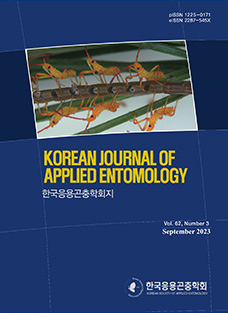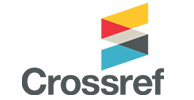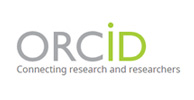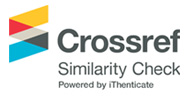Pine wilt disease (PWD), caused by the infection of the pinewood nematode (PWN), Bursaphelenchus xylophilus, leads to significant environmental damage in pine forest ecosystems across multiple continents, including Asia and Europe (Mota and Vieira, 2008;Zhao et al., 2008;Zamora et al., 2015). Pinus species, which dominate Korean forests, are highly susceptible to PWN, resulting in substantial ecological and economic losses due to PWD (Back et al., 2024).
Current control strategies for PWN primarily involve chemical treatments. The active ingredients in these chemicals are often avermectin analogs, originally derived from microorganisms (Lasota and Dybas, 1991;James et al., 2006;Turner and Schaeffer, 2012). However, the use of chemical pesticides with the same mode of action raises concerns about the development of resistance. For reducing the development of resistance, chemical pesticide with the different mode of action would be demanded, and studies for finding alternative control methods - such as the use of plant-derived compounds, microbial extracts and microorganism–are under investigation (Park et al., 2007;Barbosa et al., 2010;Han et al., 2021;Kang et al., 2022). Among such alternatives, microbial extracts and their components could be contained potential candidate for useful pesticides (Kang et al., 2021;Kang et al., 2022). For searching potential candidate for useful pesticides, we evaluated the nematicidal activity of extracts of entomopathogenic fungi.
Cordyceps spp. and Ophiocordyceps spp. are entomopathogenic fungi known for infecting lepidopteran, coleoptera, and orthoptera insects at various developmental stages (larval, pupal, or adult), using them as hosts to form fruiting bodies (Sung et al., 1997;Wang, 2011;Shrestha et al., 2016;Zha et al., 2020). Globally, more than 100 genera and 750 species of entomopathogenic fungi have been reported (Arora et al., 1991), with over 16 species of Cordyceps identified in Korea (Sung et al., 1997). The biological activity of entomopathogenic fungi, such as anti-inflammatory, antifungal, antioxidant, and antimalarial, has been extensively studied (Kim et al., 2003;Das et al., 2021;Jędrejko and Muszyńska, 2021). Given this, it is hypothesized that entomopathogenic fungi may also produce bioactive compounds with potential efficacy against PWN.
In this study, the nematicidal activity of seven entomopathogenic fungal extracts was evaluated, and these results would contribute to identify potential nematicidal candidate for PWN control.
Materials and Methods
Entomopathogenic fungi and PWN
The entomopathogenic fungi used in the experiment were propagated from strains preserved by the Forest Microbiology and Application Division, National Institute of Forest Science, Suwon, Korea, as shown in Table 1. The provided strain was identified and confirmed by Dr. Kang-Hyeon Ka and used, and its scientific name was written according to the Index of Korean National Mushroom List of Korean National Arboretum (2024).
B. xylophilus was provided by the National Institute of Forest Science, Seoul, Korea. Its identification was confirmed through morphological characters and genetic differences, using the RFLP method (Han et al., 2008). B. xylophilus were reared on a fungal mat of Botrytis cinerea on potato dextrose agar media at 25 ± 1°C and 40% humidity for several generations for 20–25 days.
Extraction of entomopathogenic fungus
The seven strains received were passaged in Potato Dextrose Broth (PDB; DifcoTM, Becton, Dickinson and Company, NJ, USA) medium and cultured with agitation at 25°C for 30 days in 1L flask using a shaking incubator (JSSI-300C, JS Research Inc., Gongju, Korea). Then, the grown mycelia were harvested by filtering using filter paper (Whatman no 2, U.K.), dried at 40°C, and ground with a laboratory grinder (A10, IKA-Werke GmbH, Staufen Germany). The dried sample was extracted three times with 95% ethanol at room temperature for 1 hour each using an ultrasonicator (JAC-4020, Kodo Technical Research Co., Hwasung, Korea) to prepare a crude extract. The crude extract was solvent fractionated with ethyl acetate, and the ethyl acetate soluble portion was used in the experiment.
Nematicidal activity of entomopathogenic fungi extracts on B. xylophilus
Nematicidal activity of extracts was followed previous reports (Kim et al., 2021;Kim and Lee, 2022;Lee et al., 2022). In a 96-well plate, 10 μL of a fungal extract solution (50 mg of extracts in 1 mL of dimethyl sulfoxide; DMSO) was combined with 90 μL of a 0.1% Triton X-100 hydro-solution containing approximately 1,000 mixed stages (male: female: juvenile = 1:1.2:9.5) of PWN. This resulted in a final test solution concentration of 5 mg/mL. For the control, 10 μL of DMSO was used instead of the extract solution. After 24 hours, 10 μL of the treated solution was further diluted with 10 μL of distilled water, and the number of total and dead nematodes was recorded. Nematodes were considered dead if their bodies were straight and they did not move, even after transfer to clean water. Extracts exhibiting more than 80% nematode mortality were subjected to serial dilution (final test solution concentration: 1 mg/mL, 0.5 mg/mL, 0.1 mg/mL), and their nematicidal activity was reassessed. Each treatment was conducted in triplicate, with three biological replicates for each experimental condition. The experiment was repeated three times.
Statistics
Nematode mortality was adjusted for control mortality using Abbott’s correction (Abbott, 1925). The corrected mortality of each extract treatment at 5 mg/mL concentration was arcsine square root-transformed for one-way ANOVA. The means were compared and separated using the Tukey-Kramer HSD test. The lethal concentration (LC) values were estimated by probit analysis with dose-response data. Statistical analysis was performed using JMP ver. 9.0.2 (SAS Institute, Cary, US). The untransformed data are shown
Results and Discussion
Nematicidal activity of entomopathogenic fungi extracts varied significantly by species (F6,56 =3.2156, P=0.0087; Table 1). Cordyceps pruinosa extracts and Ophiocordyceps nutans extracts exhibited over 70% nematicidal activity against PWN at 5 mg/mL concentration. While, the remaining five extracts (extracts of C. militaris, Isaria sinclairii, O. longissima, O. sphcocepala, and Paraisaira gracilioides) showed moderate mortality rates ranging from 42.8% to 62.0%. Control mortality was 6.47 ± 2.16%. Among the extracts, C. pruinosa extract showed the highest mortality, with 84.7% rate. Further testing of C. pruinosa extract at serial dilution revealed a dosedependent mortality effect. The LC50 and LC90 values of C. pruinosa extract were 0.130 mg/mL (95% confidence limit [CL]: 0.106 – 0.154 mg/kg) and 6.597 mg/mL (95% CL: 5.142 –8.862), respectively (slope ± SE: 1.97 ± 0.07, χ2 = 451.53, df = 42). These results are comparable to other microbial extracts used for nematode control. For instance, Streptomyces sp. AE170020 extract demonstrated over 50% nematicidal activity at 0.125 mg/mL (Kang et al., 2022), and Sparassis latifolia KFRI 747 strain showed 52.8% mortality at 1 mg/mL (Lee et al., 2016).
The higher mortality rates observed with the active compounds compared to the fungal extracts underscores the importance of identifying the key active ingredients responsible for nematicidal activity in fungi. In similar studies, alloaureothin and aureothin were identified as active compounds in Streptomyces sp., with LC90 values of 0.83 μg/mL and 0.81 μg/mL, respectively (Kang et al., 2022). Similarly, sparassol, the active compound from S. latifolia KFRI 747 strain, exhibited an LC50 value of 0.084 mg/mL (Lee et al., 2016).
Cordycepin, also known as 3’-deoxyadenosine, was initially isolated from Cordyceps militaris (Cunningham et al., 1950) and has since been found in other Cordyceps species as well as in Ophiocordyceps (Zhou et al., 2008;Xu et al., 2016;Jin et al., 2017). Its biological activities, including anti-inflammatory, immunoregulatory, and antiparasitic effects, have been well documented (Kim et al., 2003;Zhou et al., 2008;Das et al., 2021;Huang et al., 2024). Furthermore, C. pruinosa has been reported to produce cordycepin (Meng et al., 2014). However, no studies have directly linked cordycepin to nematicidal activity.
In our current experiment, we were unable to identify the specific active compound responsible for the nematicidal effects observed in the fungal extracts. Therefore, further research is required to isolate and identify these compounds to facilitate the development of fungal-based nematicides.









 KSAE
KSAE





